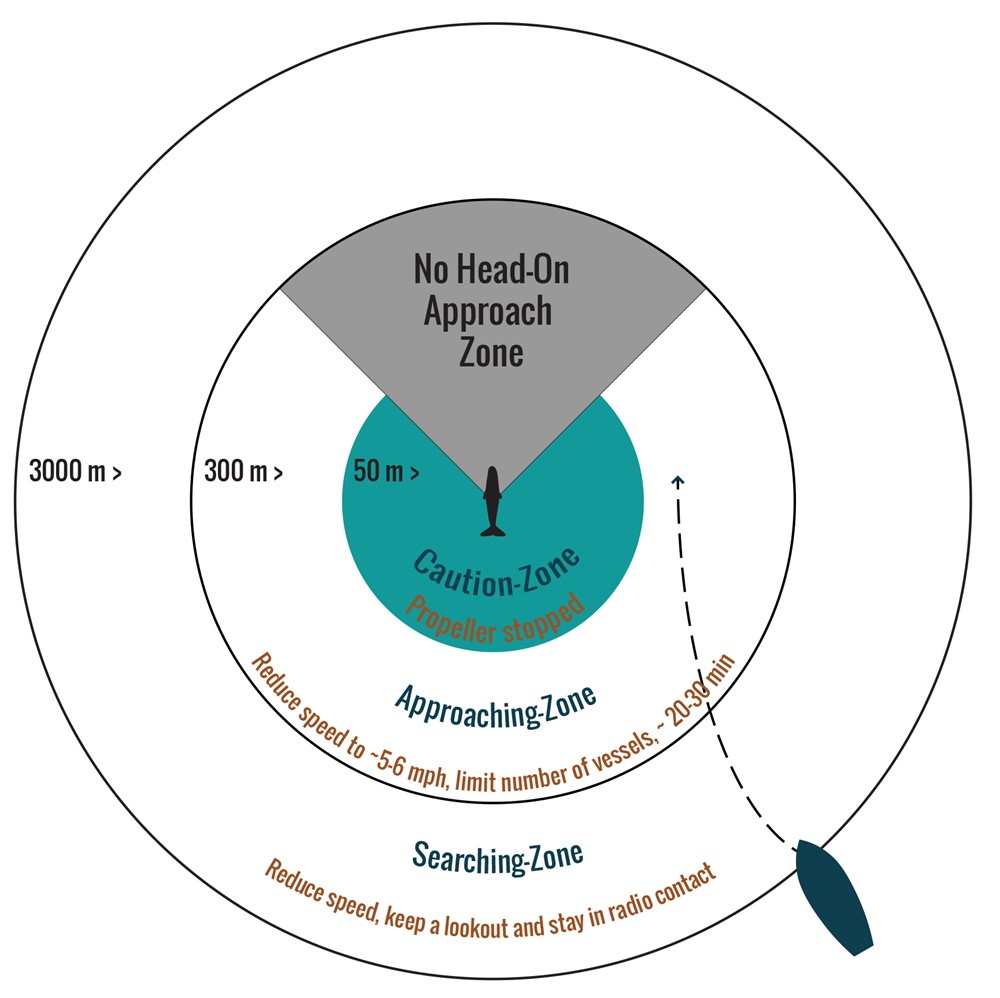Code of Conduct
FOR RESPONSIBLE WHALE WATCHING
We have to remember that these are wild animals and to enjoy them for the future we need to show them patience and respect. We will try to get you close but how close we get is always on the animal’s terms as we aim to minimize disturbance.
This is a Code of Conduct we aim to abide by, however, there are many variables to consider when out at sea, such as the weather, number of whales, prey availability, if there are calves present, animal behaviour and so on and so forth.
Searching-Zone (3000 m >)
Keep a dedicated lookout and stay in radio contact with other vessels (approaching and departing). Avoid making sudden or excessive noises and disturbance for the cetacean. Avoid sudden speed or course changes (approaching and departing). Assess the cetacean behaviour and avoid repeated attempts to interact with animals that are showing signs of distress.
Approaching-Zone (300 m >)
Aim at maintaining a distance of 300 m at the beginning of the encounter and gradually get closer with time. Stop the main propeller (max speed ≈ 5-6 mph). If the cetacean is travelling fast you can speed up a little (up to ≈ 8 mph) but not directly towards the animal. Avoid following behind cetacean and never deliberately approach directly in front. Vessel movements should parallel them by approaching cautiously at an oblique angle (from behind). Do not come closer if there is another boat in the approaching zone, unless the other boat gives away or signals that it safe to approach. Take turns if there are more boats in the area, preferably each boat should not spend more than 20-30 minutes within the area at once. Never (deliberately) sail through pods of concentrated cetacean. Keep a steady speed if dolphins approach the vessel and start bow-riding or slowly stop and let them pass. Do not attempt to encourage dolphins to bow-ride. Ensure that the vessel does not disturb nesting or resting birds.
Caution-Zone (50 m >)
When possible, stop the propeller if cetacean approaches the vessel and do not re-engage propulsion until the cetacean is observed well clear of your vessel. Do not touch, swim with or feed cetacean.
If you think that this Code of Conduct has not been fulfilled, please discuss it with the crew, send an e-mail to Gentle Giants ([email protected]) and / or contact the IceWhale office ([email protected]).




